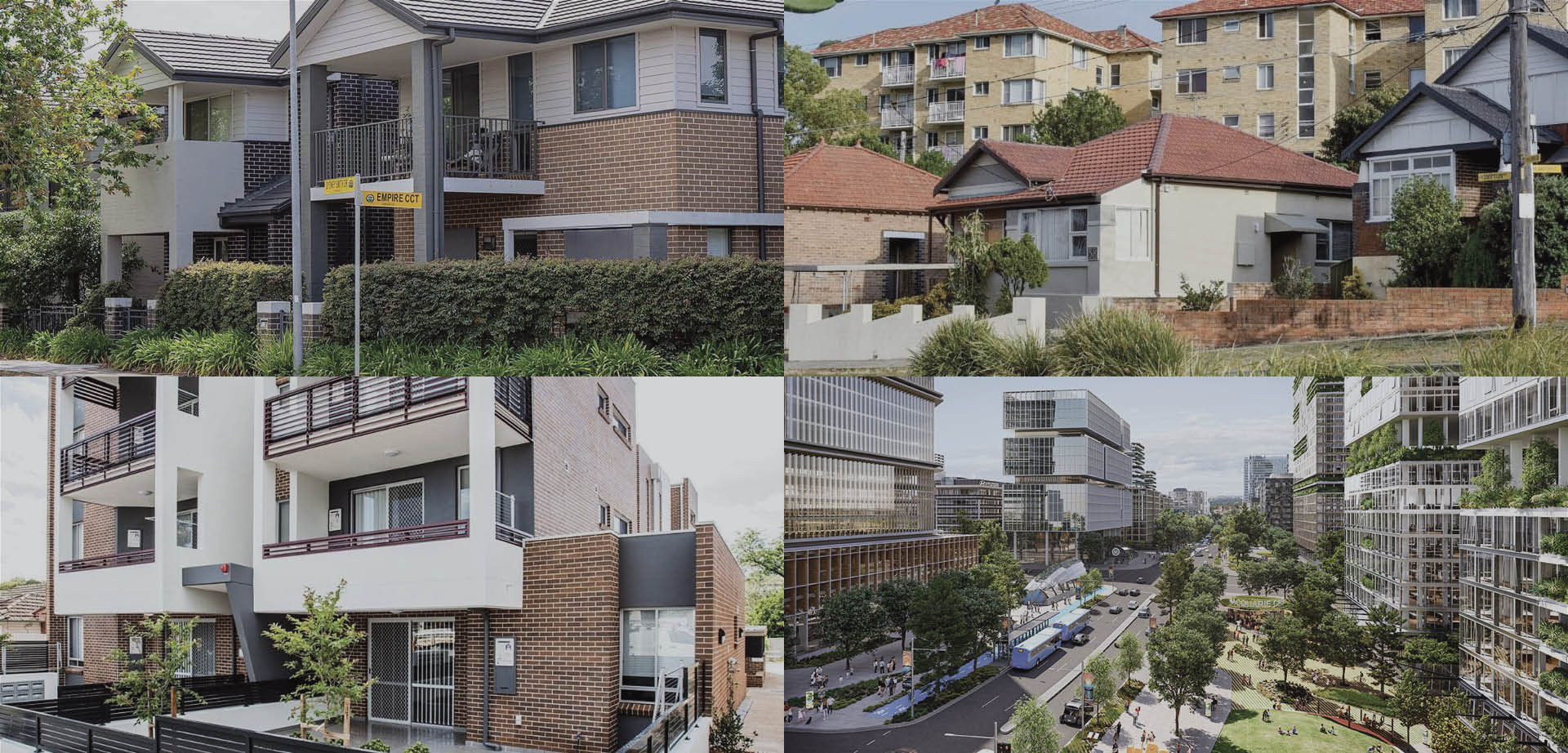Affordable housing is of growing concern in the media.. With rising property prices and increasing demand, finding viable solutions is crucial. Recently, the Department of Planning, Housing and Infrastructure’s introduced planning amendments aimed at addressing this challenge. But are these changes the silver bullet we need? Let’s delve into the specifics and explore their potential impact.
The Promise of 30% Bonus for Infill Affordable Housing
One of the most talked-about changes is the 30% bonus for infill affordable housing. This initiative aims to incentivise developers by offering a density bonus in exchange for dedicating a portion of their developments to affordable housing.
Understanding the 30% Bonus
The 30% bonus sounds promising on paper. It offers developers an additional floor space ratio (FSR) if they commit to including affordable housing units. This measure is designed to make projects more financially feasible, encouraging more affordable housing developments. However, the effectiveness of this bonus is contingent on several factors.
Feasibility Metrics
If a project already struggles to meet feasibility metrics, this bonus alone may not suffice. The increase in FSR might not cover the costs associated with affordable housing units, especially in areas with stringent local planning controls. Developers may find that the financial uplift is insufficient to offset the reduced profitability of affordable housing, particularly in high-cost areas.
Local Planning Controls: A Hurdle
Local planning controls can significantly limit the effectiveness of the 30% bonus. Factors like heritage preservation, building setbacks, and community character requirements often restrict the achievable FSR, reducing the incentive’s impact. For instance, heritage buildings or areas with strict aesthetic regulations may not be able to utilise the bonus fully, diminishing its intended effect.
Community Resistance
Community resistance is another challenge. Even with state-level support, local opposition can delay or derail projects. Developers and planners must engage with communities early and address their concerns to build support for affordable housing initiatives. Overcoming NIMBY (Not In My Back Yard) attitudes requires transparent communication and demonstrating the broader benefits of affordable housing to the community.
Transit-Oriented Developments (TODs) and Planning Reforms
Transit-Oriented Developments (TODs) are central to the Government’s strategy. These developments are designed around public transport hubs, promoting sustainable living and reducing reliance on cars. By focusing on TODs, the Government aims to create accessible, vibrant communities that cater to diverse housing needs.
Benefits of TODs
TODs offer several advantages. They provide easy access to public transport, reduce traffic congestion, and support vibrant, walkable communities. By integrating affordable housing within TODs, the Government aims to create inclusive, diverse neighbourhoods. The proximity to public transport also makes these areas more attractive to a broader range of residents, including those who may not own a car. Therefore there will be less car parking requirements on the developments. The cost saving of not delivering the additional parking can improve the project feasibility and could tip a project from being economically unfeasibly to being delivered.
Challenges and Solutions
Despite their benefits, TODs face significant planning challenges. The high level of scrutiny required for State Significant Development Applications (SSDAs) can be too demanding for smaller residential projects. Simplifying the SEARs (Secretary’s Environmental Assessment Requirements) could make it easier for developers to navigate the approval process. This simplification ensures that smaller yet significant developments do not face disproportionate hurdles compared to larger projects.
Coordination of Authorities
Effective coordination among various authorities is essential for the success of TODs. Currently, the need for multiple referrals and approvals can cause delays. Streamlining these processes by designating a central coordinating body could accelerate project timelines and improve efficiency. This central body could oversee the entire process, ensuring that each step is completed in a timely manner and reducing the overall project duration.
State Significant Development Applications (SSDAs)
SSDAs are another key component of the Government’s reforms. These applications bypass local councils, allowing the state to oversee significant projects directly. This oversight aims to streamline the approval process for large-scale developments, but it also introduces its own set of challenges.
Empowering Planning Panels
For SSDAs to be effective, planning panels need greater empowerment and discretion. Reducing local political influence and encouraging independent decision-making can help panels make more objective, timely determinations. Ensuring that these panels operate with a clear mandate and sufficient resources is crucial to their success.
Simplifying Approval Processes
Simplifying the approval processes for SSDAs, particularly for smaller residential developments, is crucial. Establishing a standard set of SEARs could make the requirements more predictable and manageable for developers. Predictability in the process helps developers plan better and reduces the risk of unforeseen delays, making it more attractive for investment.
Addressing Duplication
The current requirement for multiple referrals to individual authorities before and after development consent is often redundant. Consolidating these steps could reduce bureaucratic hurdles without compromising the thoroughness of the planning assessment. By eliminating unnecessary duplication, projects can move forward more swiftly, benefiting both developers and the communities they aim to serve.
The Role of Government in Coordinating Efforts
Effective government coordination is vital for the successful implementation of the Government’s planning amendments. A dedicated entity to oversee the coordination of authorities could ensure timely advice and approvals. This entity would play a crucial role in aligning various stakeholders and streamlining processes.
A Central Coordinating Body
Creating a central coordinating body within the government to guide and manage the interactions between various authorities could streamline processes. This body would facilitate better communication and faster decision-making, helping to keep projects on track. By acting as a single point of contact, it could reduce confusion and ensure that all parties are working towards common goals.
Additionally, the current approval process involves multiple steps that could be streamlined. Presently, at the planning application stage (State Significant Development Application, or SSDA), the Department of Planning, Housing and Infrastructure refers the application to various authorities for high-level comments.
Following SSDA approval, the applicant must separately seek individual approvals from each authority. This process follows an initial high-level review of the Transport Oriented Development (TOD) scheme during the rezoning phase, leading to a three-step approval process:
- The Government refers to authorities during the rezoning process for TOD.
- The Government refers to authorities upon receipt of the SSDA application.
- The applicant seeks formal, detailed approval from authorities after SSDA approval.
The proposed central body could simplify this process by eliminating the second step if the SSDA application aligns with the previously approved TOD scheme. This adjustment could lead to quicker SSDA approvals, reducing project delays and administrative burdens.
The Path Forward: Continuous Improvement
While the Government’s planning amendments are a step in the right direction, they are not a silver bullet. The complexity of the NSW planning system means that continuous improvement and refinement of these measures are necessary. Adapting to new challenges and learning from implemented projects will be key to long-term success.
Monitoring and Evaluation
Regular monitoring and evaluation of the implemented measures can provide valuable insights. Understanding what works and what doesn’t will enable the Government to make data-driven adjustments, ensuring the policies remain effective and responsive to changing needs. Continuous feedback loops will help refine strategies and improve outcomes over time.
Conclusion: A Step in the Right Direction
In conclusion, the Government’s planning amendments represent a promising step towards addressing the affordable housing crisis. However, they are not a one-size-fits-all solution and alone will not solve the housing crisis. By understanding the nuances and challenges and by fostering continuous dialogue and improvement, we can move closer to creating sustainable, affordable housing solutions for all.
The journey towards affordable housing is complex, but with thoughtful planning and persistent effort, we can unlock the potential for more inclusive, vibrant communities. Through ongoing collaboration and a commitment to continuous improvement, the Government’s initiatives can pave the way for a brighter, more affordable future for everyone.
Photo Source: NSW Government Planning





